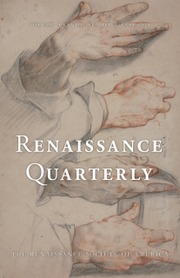Teodolinda Barolini’s latest book is an updated and well-knit entity of sixteen chapters, with a title emphasizing the multiplicity in the ideas of Dante, who never offered easy solutions but took an innovative, unorthodox approach, in breach of stereotype, to philosophical, theological, and social dilemmas. Her book is a challenge to contemporary Dante studies, indicating new paths for research. Barolini calls for a more historical approach to Dante’s oeuvre, affording a better assessment of his place in the history of ideas—for example, in concepts of the other world or courtliness. In her last two chapters, dedicated to philological issues, she scrutinizes a series of ill-advised methodologies, showing the dangers of a disproportionate relation of philology to hermeneutics, with philology constrained by a priori hermeneutic premises.
One of her main issues in “Social and Cultural Difference” is Dante’s view on sexuality and race, indirectly connected with his concept of limbo. His heterodox ideas, distinctly ahead of his time, on the inmates of this privileged circle of hell, present a synchronic and diachronic vista of celebrated ancient philosophers and poets alongside medieval Arabic personalities: Saladin and the scholars Avicenna and Averroes. Much has been written on limbo, yet Barolini argues for the need to review the concept from the historical aspect, contending that Dante’s unconventional presentation of sexuality in the world beyond may be assessed in the context of the medieval notion of punishment for sins of the flesh. He treats lechery (and likewise sodomy) as inordinate concupiscence, which the peccator carnali finds irresistible; Dante perceives this as a psychological rather than a sexual issue. His application of the Aristotelian paradigm makes his view of excessive carnal desire, whether hetero- or homosexual, mark the two poles of sin at the opposite bounds of the virtue of temperance. His acknowledgement of the right to salvation, not only to ancients renowned for their virtue but also to contemporary pagans living on the banks of the Indus and deprived by geographical remoteness of the chance to embrace Christianity, is perhaps even more at odds with his times.
In “Metaphysical Difference,” Barolini examines Dante’s theology of eros—a contaminated mix of erotic and biblical language that occurs when love for a woman is confounded with love of God. This sets him apart from his contemporary poets. In a chapter on the Aristotelian method to establish truth, Barolini shows that the key point is solutio distinctiva, a form of refutation useful whenever the statement to be disproved is only partly false. Here Dante’s aim is to distinguish between truth and falsehood but reconcile truths only ostensibly contradictory. Barolini shows that this is achieved in Monarchia and Paradiso by a completely different type of rhetoric: the prophetic language of Scripture.
In “Aristotelian Disruptions 1,” Barolini analyzes how Aristotle’s theory of the golden mean made its way into vernacular poetry, and Dante’s contribution to the process. In “Aristotelian Disruptions 2,” she offers a new reading of the donna gentile episode in Vita Nuova and Convivio in the context of Dante’s views on constancy in love. She takes a literal, not allegorical, approach, referring to Dante’s other works—for example, Epistola 3’s question of “whether the soul can move from passion to passion” (266). Barolini does not dismiss love for the donna gentile as of little consequence but takes a broader approach to show that compulsion in love is part of the philosophical determinism Cecco d’Ascoli accused Dante of in Acerba, attacking him indirectly for “Voi che ‘ntendendo,” which is the subject of Barolini’s last chapter. In L’amaro lagrimar, the young Dante took a radical stand, claiming the lover should be faithful to his beloved even after her death. Yet even as he laid down his new standard, he challenged it: what was the lover to do if a new love eclipsed his former passion? In Barolini’s opinion, Dante created the donna gentile episode to show how disconversion may be used to lay the foundation for reconversion and final triumph for the old love, as we observe in Purgatorio 30–31.
Teodolinda Barolini’s book is a salient contribution to Dante studies and an incentive for further research.



